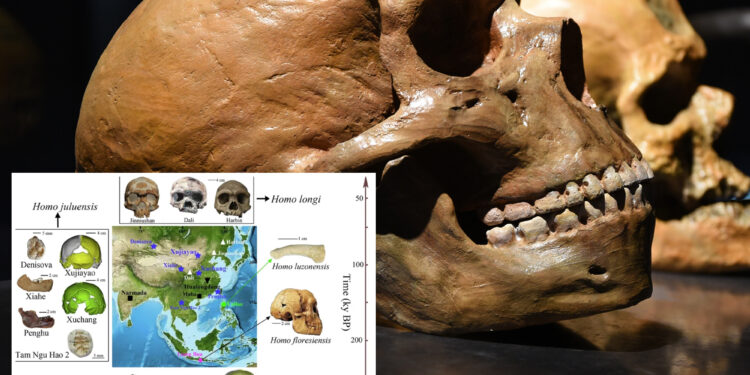
Researchers have uncovered new insights into a long-lost human species known for their particularly hefty craniums, according to a recent study.
The Julurens — or “big head” people — are twisting scientists’ long-accepted understanding of human evolution.
How humans came to be is largely understood to have been a linear process, starting with apelike ancestors like Lucy who evolved into different variations over time until today’s people walked the Earth.
But paleoanthropologists Christopher Bae and Xiujie Wu, the researchers behind the study, are challenging this with their new conclusions about the Homo juluensis based on fossils from eastern Asia during the Late Quaternary era.
The Julurens lived approximately 300,000 years ago and survived in small groups across eastern Asia before disappearing around 50,000 years ago, according to the study.
Bae and Wu — hailing from Hawaii and China, respectively — found that Eastern Asia was home to a slew of other distinct human species at the same time — suggesting that a network of different human-esque populations not only coexisted but interacted and even mixed over time.
The duo identified four human species that existed during this time: Homo floresiensis, a exceedingly small “hobbit” human found on the Indonesian island of Flores; Homo luzonensis from the Philippines; Homo longi of China; and the recently named Homo juluensis.
Each species carried distinct characteristics that were eventually phased out over evolution. Homo floresiensis and Homo luzonensis were both small and compact, while Homo longi and Homo juluensis had bulbous heads.
“We did not expect being able to propose a new hominin (human ancestor) species and then to be able to organize the hominin fossils from Asia into different groups. Ultimately, this should help with science communication,” Bae said in a University of Hawaii at Manoa release.
The breakthrough adds much-needed clarity to eastern Asian fossil records, which have been lacking compared to other discoveries traced to Europe and Africa, the researchers said.
The study, however, isn’t infallible.
Not all of the fossils used are complete, and researchers still don’t fully understand the genetic relationships between the species. The study does indicate a possible breakthrough that could shatter the accepted models of human evolution, but for now, it remains just a theory.






